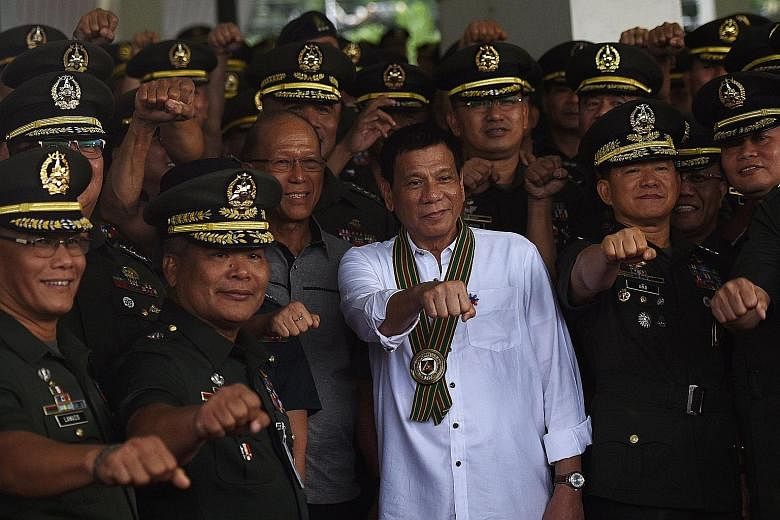WASHINGTON • Philippine President Rodrigo Duterte would face major obstacles in following through on his threat to reduce purchases of American weapons in favour of Russian and Chinese arms, including retraining a military deeply accustomed to working with the United States, experts have said.
Mr Duterte said in speeches in Manila on Tuesday that the US did not want to sell missiles and other weapons to the Philippines, but that Russia and China had told him they could provide them easily.
The US is the single largest provider of arms to the Philippines, according to figures maintained by the Stockholm International Peace Research Institute (Sipri), which tracks military expenditures globally. The Philippines spent US$3.9 billion (S$5.3 billion) on its military last year, according to Sipri data. That spending has risen nearly every year since 2010, when it stood at US$2.4 billion, the data shows.
The US and the Philippines have become more intertwined militarily in the last two years, holding more exercises and training. There have also been more US ship and aircraft visits under President Barack Obama's shift of military forces and diplomatic efforts towards Asia in the face of China's rise.
The Philippines is the largest recipient of US funds in the Asia-Pacific region under the Foreign Military Financing programme, which is provided by the US to help countries purchase American-made weapons and equipment. It received US$50 million under the programme in the 2015 fiscal year.
That dependence on US weapons and systems means the Philippine military would have to retool its command-and-control structure if it wants to switch to Chinese or Russian systems, said Professor Richard Javad Heydarian from De La Salle University in Manila, who was an adviser to the Philippine House of Representatives. "There will be some problems with configuration," he said. "It takes years for the Philippine army to reorient itself to new technology."
Though Russia in particular could offer high-quality weapons systems, the Philippines would have to take into account their interoperability with existing American stock, said Mr Lyle Goldstein, an expert on Chinese maritime issues at the US Naval War College. "You can't just buy a radar from this country and a missile from that country," he said. "The weaponry has to work together."
The military relationship between the US and the Philippines goes well beyond arms sales, extending to training exercises and support for maintenance.
Russia and China do not have the same reputation of providing comprehensive training and support, said Ms Amy Searight, a former US deputy assistant secretary of defence for South and South-east Asia. "It's not just the weapons or the armaments... It's using those to build real capabilities," she said.
Most likely, Mr Duterte's aim is to signal to China that he is willing to tinker with existing US-Philippines military cooperation, even if on the margins, Prof Heydarian said.
Mr Duterte could also be trying to strengthen his position in order to get better prices on military equipment from the US, experts said.
Russian and Chinese weapons are typically cheaper than American systems.
REUTERS

